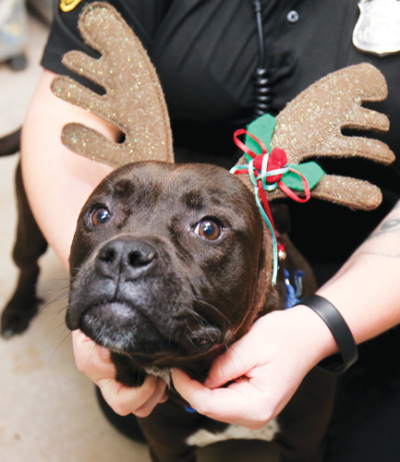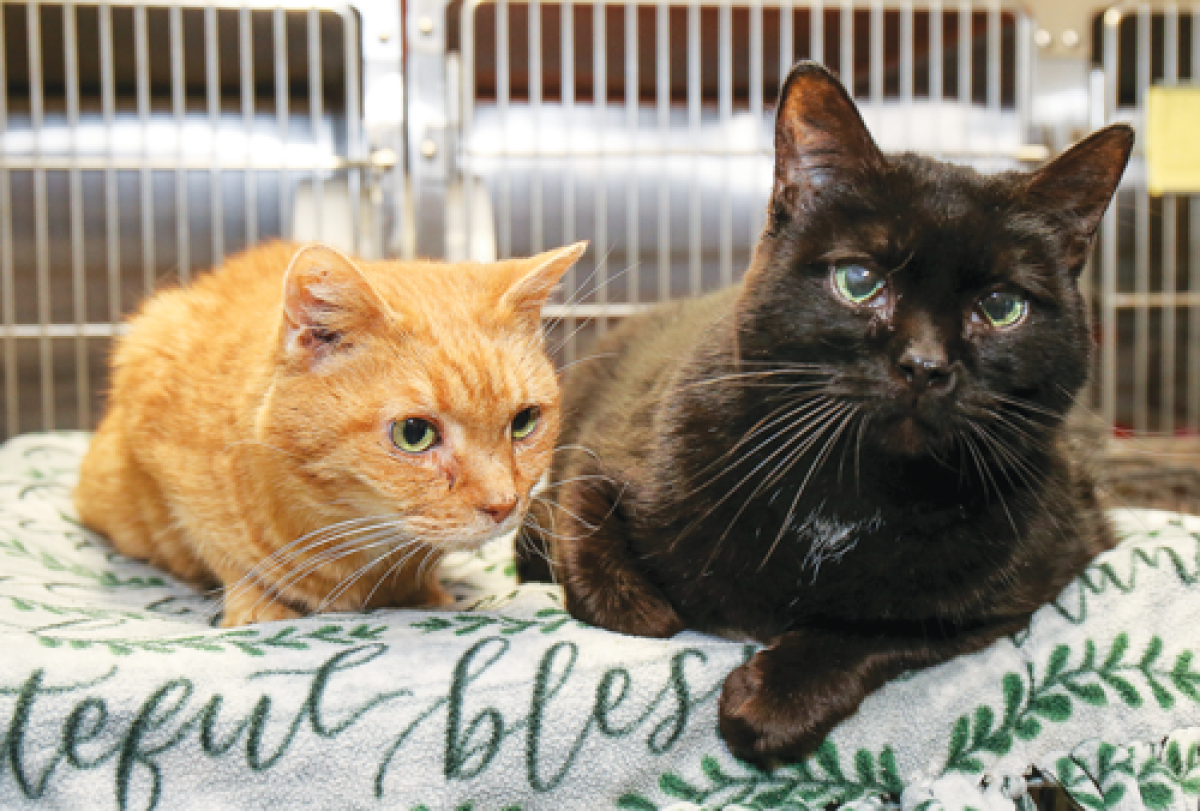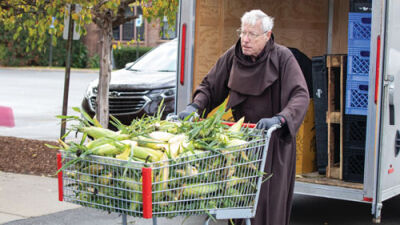
Mr. Moo is a new arrival at the Madison Heights shelter. He is a boxer mix, less than a year old, and was found abandoned. He is good with both children and cats.
Photo by Patricia O’Blenes
METRO DETROIT — Cold weather can injure and kill pets, and no breed is entirely safe. Animal control officers are reminding residents to be vigilant, protecting their furry friends from frostbite, falls on ice, hypothermia and other winter woes.
“Anything under 32 degrees, I’d say you definitely need to have booties on your dogs’ paws, and don’t let them outside for more than five to 10 minutes,” said Paige Wallace, the animal control officer for Madison Heights. “Even if the snow and ice isn’t getting on their paws, they could still be getting frostbitten. Yes, their bodies are covered in fur, but the paws aren’t. And if they’re limping, they could be numb or frozen, and starting to get frostbitten.
“Also pay attention to anything that’s warmed up throughout the day, like slush or puddles of standing water,” she said. “I don’t think dogs should walk through that, because now the paws will be wet and can become frozen later. The webbing between the toes can accumulate water, freeze up and cause freezer burn. Even with winter dogs, like huskies, you have to pay attention, because the ones here weren’t raised outside like the ones in, say, Alaska, so they’re not used to this weather.”
If a dog is pawing at the door or lifting their paws while walking, it’s possible their feet are hurt and should be inspected for any snow and ice, and cleaned accordingly.
In an email, Jennifer Thomas, the animal control officer for Hazel Park, said pet owners should take a moment to clean their pets once they come back inside, regardless of whether their paws appear fine.
“Wipe down your animal’s belly, legs and feet once they’re inside to make sure they have not picked up any chemicals — like antifreeze or other deicing products — while outside,” Thomas said. “You do not want your animal to lick these off themselves.”
Despite walking on four legs, pets are also at risk of slipping and falling down on frozen terrain. While deicers are available for reducing snow and ice buildup on driveways and sidewalks, they can be toxic to pets, causing upset stomachs, vomiting, diarrhea and skin irritation.
As such, Wallace suggests considering sand or kitty litter instead. While using these on pathways won’t melt ice, it can improve traction to reduce falls when walking on slippery surfaces.
Cold weather carries other dangers for pets, which are prone to hypothermia, just like humans. Symptoms of hypothermia are sometimes subtle and hard to observe, and include delayed reflexes, sluggishness and paleness. Loss of consciousness can occur in the most severe cases. Get the pet into a warm environment and seek veterinary help.
“Check for signs of discomfort such as whining, shivering, excessive tiredness, slowing down or stopping movement, weakness, or a reluctance to go outside,” Thomas said. “Also, most cities and counties have ordinances regarding cold weather, just like hot weather. In Hazel Park, animal owners are not allowed to leave their animal out for extended periods of time when the temperature has dropped below 43 degrees. Know your city and county ordinance.”
Thomas also recommends a waterproof coat for dogs with shorter fur, such as chihuahuas, pugs, pit bulls and boxers, in addition to paw protectors. However, some dogs won’t tolerate these. Either way, when the weather is cold, consider taking shorter walks more often, instead of long walks.
Of course, many animal lovers feel equal concern for strays trying to survive out in the cold. Here, there are some things residents can do to help, but also precautions they should take.
For starters, in providing food for strays, be sure to only bring out the bowl when the animal is around to avoid attracting others that could spread disease. Always clean the bowl between uses. With water dishes, use a heated dish to prevent the water from freezing, and change the water often, cleaning the bowl as well.
As far as constructing shelters, some cities prohibit them, as they could lead to cat colonies. A shelter for an outdoor animal should be lined with straw, which wicks away moisture to keep it from freezing. Blankets or hay are a bad idea — both become saturated with water and freeze upon exposure to cold air. Flaps over the door and facing the entrance away from the wind can keep out cold air.
TNR groups — TNR stands for “trap, neuter, release” — specialize in capturing feral cats, spaying or neutering them, and then releasing them back into the wild, at which point they will no longer wander in search of mates or reproduce. They’re often marked with a tipped ear, where an ear is cropped — an indication you may be looking at a stray who has already been fixed.
There is also always a possibility that the stray you see is a lost pet that belongs to someone. They may have a microchip that identifies the owner. If they’re pawing at your door to come inside, they’re more likely they have a home. It’s recommended to photograph them and post the pictures on social media platforms to try and find the owner. Your local animal control division can try to capture the animal and get it checked as well.
“Usually, nine times out of 10, the pet goes home that way,” Wallace said.
In general, she recommends reporting any stray animals within 24 hours of seeing them.
In the meantime, “If you’re willing to confine it, there’s always a chance that you can get attacked or bit. But if you’re going to try, get them someplace safe and secure, like a spare room or small bathroom you don’t use often, to tide them over until (animal control) arrives the next day,” Wallace said. “And you can give them a bit of water, but be careful, because if it appears injured or old or sick, feeding it could lead to problems. Say it has a broken leg, and you feed it, and then we bring it to the vet to get it fixed — if that happens and the dog goes under anesthesia, they could choke to death on their own vomit, same as a person. It’s why the doctor tells you no food or drink the night before an operation.”
Thomas says it’s best to play it safe and leave the handling of strays to animal control officers. She added that when warming up any animal that appears cold, it’s important to apply a slow, gentle heat to avoid shocking the system. And with your own pets, it’s best to just spend more time indoors.
“If you can,” Thomas said, “just bring your animals inside.”
 Publication select ▼
Publication select ▼


























